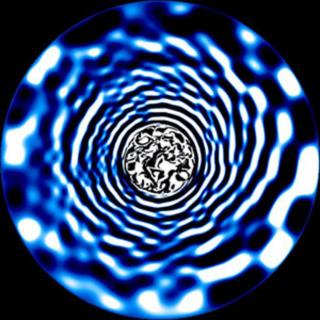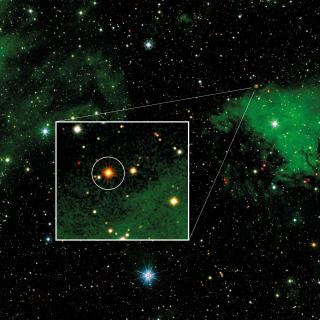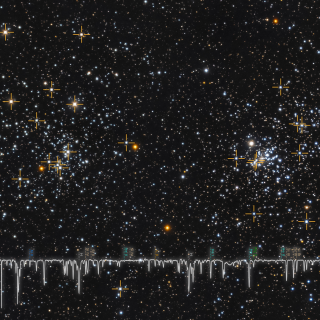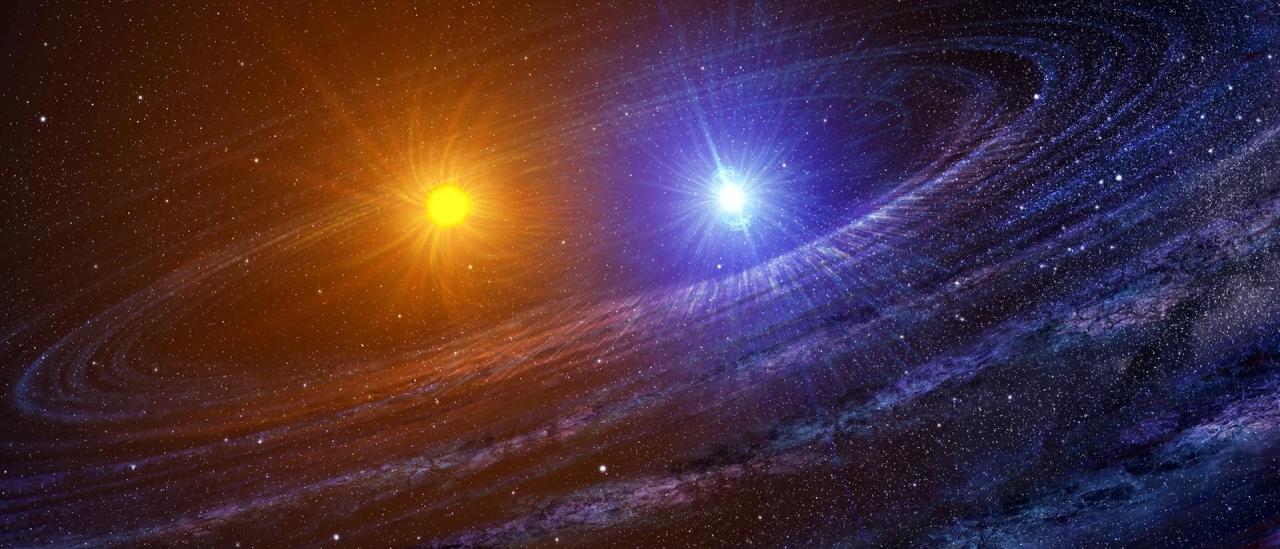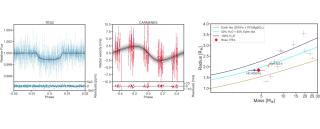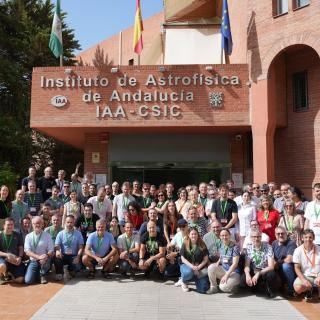An international piece of research, led by the Instituto de Astrofísica de Canarias (IAC) has found clues to the nature of some of the brightest and hottest stars in our Universe, called blue supergiants. Although these stars are commonly observed, their origin has been an old puzzle that has been debated for several decades. By simulating novel stellar models and analysing a large data sample in the Large Magellanic Cloud, IAC researchers have found strong evidence that most blue supergiants may have formed from the merger of two stars bound in a binary system. The study is published in the prestigious journal The Astrophysical Journal Letters.
B-type blue supergiants are very luminous and hot stars (at least 10,000 times more luminous and 2 to 5 times hotter than the Sun), with masses between 16 to 40 times the mass of the Sun. They are expected to occur during a very rapid phase of evolution according to conventional stellar lore and thus, should be rarely seen. So why do we observe so many of them?
An important clue to their origin lies in the fact that most blue supergiants are observed to be single, that is, they have no detectable gravitationally-bound companion. However, most young massive stars are observed to be born in binary systems with companions. Why are blue supergiants single? The answer: massive binary stellar systems 'merge' and produce blue supergiants.
In a pioneering study led by IAC researcher Athira Menon, an international team of computational and observational astrophysicists simulated detailed models of stellar mergers and analysed a sample of 59 early B-type blue supergiants in the Large Magellanic Cloud, a satellite galaxy of the Milky Way.
“We simulated the mergers of evolved giant stars with their smaller stellar companions over a wide range of parameters, taking into account the interaction and mixing of the two stars during the merger. The newly-born stars live as blue supergiants throughout the second longest phase of a stars' life, when it burns helium in its core," explains Menon.
According to Artemio Herrero, IAC researcher and co-author of the article, "the results obtained explain why blue supergiants are found in the so-called 'evolutionary gap' from classical stellar physics, a phase of their evolution where we would not expect to find stars."
But can such mergers also explain the measured properties of blue supergiants? "Remarkably, we found that stars born from such mergers have greater success in reproducing the surface composition, particularly the nitrogen and helium enhancement, of a large fraction of the sample than conventional stellar models. This indicates that mergers may be the dominant channel to produce blue supergiants", says Danny Lennon, an IAC researcher who also participated in the study.
This study makes a big leap towards solving an old problem of how blue supergiants form and indicates the important role of stellar mergers in the morphology of galaxies and its stellar populations. The next part of the study will attempt to explore how these blue supergiants explode and contribute to the black hole-neutron star landscape.
Article: Athira Menon et al. “Evidence for Evolved Stellar Binary Mergers in Observed B-type Blue Supergiants” 2024 ApJL 963 L42. DOI: 10.3847/2041-8213/ad2074
Contact at the IAC:
Athira Menon, athira.menon [at] iac.es (athira[dot]menon[at]iac[dot]es)
Artemio Herrero, ahd [at] iac.es (ahd[at]iac[dot]es)
